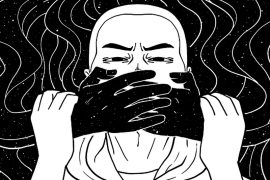Never in the history of independent India did the word ‘Mitron’ terrify a billion people as it did in November 2016. At 8 PM, November 8, the Prime Minister of India, Narendra Modi, decided that the Reserve Bank of India, an institution ‘Guaranteed by the Central Government,’ would dishonour its ‘promise to pay the bearer’ the sum of whatever they were due.
The Modi government decided to ‘demonetise’ or ban the country’s notes overnight without a reason, explanation or deliberation. No one knew why–or how–the government took this decision. The logic used to justify this random action varied from day to day. One day, it was to curb ‘black money.’ Another day, it said the ‘note ban’ was intended to accelerate the digitalisation of the Indian economy.
Was his decision based on sound economic logic? Or was it quack economics? Or, even worse, was it purely an exercise of raw power? No one knows. The reason behind this decision remains a mystery even today.
Critics, armchair analysts and intellectuals came up with fanciful terms to describe this decision – from ‘Voodoonomics’ and ‘Modinomics’ to ‘Tuglaqnomics’ to ‘NaMonomics.’ And, whenever the Prime Minister announced he would speak to the nation, a petrified populace would sit glued to their television sets and mobile phones, wondering what additional damage the Prime Minister would inflict upon them – of course, ever so gently, using the word ‘Mitron.’ Cartoonists came up with caustic strips showing how the common man, the so-called ‘aam aadmi,’ was terrified of the term ‘Mitron’ (meaning friends) every time Prime Minister Modi used it.
In reality, Modi’s ill-conceived decision inconvenienced over a billion people. And Indians, the people who elected him as their leader, had no choice but to queue up outside banks to protect their hard-earned money. Hundreds of people across the country – weak in health, unable to bear the stress – had died waiting in queues. The old and disabled people had to struggle to get things done. And with the introduction of new currency and cash shortages, banks witnessed daily chaos and mayhem.
But the Prime Minister was not held accountable for his decisions. Oddly, even as the people of the country patiently queued outside banks to protect their hard-earned money, struggling to meet their immediate needs, Prime Minister Modi, who was on a visit to Japan, blinded by his arrogance, joked about their pathetic situation, much to the amusement of an insensitive audience.
Concerned by Prime Minister Modi’s irrational decisions, Dr Manmohan Singh, the former Prime Minister of India, an Oxford-educated economist, spoke against the move, calling it ‘organised loot and legalised plunder.’ But Prime Minister Modi, his party, and minions in the media who cravenly toed the government line tried their best to establish the narrative that the decision to ban India’s currency was aimed at ‘eliminating counterfeit currency/black money.’
Did the Reserve Bank of India or the Government of India find evidence of vast amounts of counterfeit currency circulating in the economy? The answer is simple and straightforward – NO.
But Modi’s decision – which we now know was taken against the advice of the outgoing Governor of the Reserve Bank of India, Dr Raghuram Rajan – devastated the Indian economy. Thousands of Small and Medium Enterprises, unable to pay salaries, laid off their employees. Many had shut shop. Consequently, hundreds of thousands of people in the unorganised sector, particularly people in the lower-income groups, were pushed into desperate poverty.
Repeated warnings by eminent economists – published as reports and op-eds in reputed journals and newspapers – had no impact on the Modi government’s quack economics. Decision-making in the Modi government was neither transparent nor democratic.
While most Indians struggled, the fortunes of a cabal of industrialists close to Modi skyrocketed. Gautam Adani, a Gujarat-based businessman whose meteoric rise coincides with Modi’s political career, is a classic case in point. Post-2014, after Modi became Prime Minister, the Adani empire grew significantly, expanding from ports and mining to energy and media. Much of this growth was funded (either through debt or equity) by public sector companies such as the State Bank of India, Bank of Baroda, and Life Insurance Corporation, to name a few.
Though Modi’s decision-making subjected a billion people to significant hardship, they voted him to power the second time. Succumbing to fear mongering, divisive narratives and deceptive propaganda in the name of religion, they gave him an significant majority in 2019. And then, as if the impact of demonetisation wasn’t enough, COVID wrecked havoc in 2019.
Prime Minister Modi, electorally immune from his disastrous decision on demonetisation, closed off the country’s economy yet again by imposing a lockdown within four hours. However, despite the ‘world’s strictest lockdown,’ millions of poor people who migrated to cities to find employment started returning to their homes. Abandoned by the state, they used whatever means they could to go back to their villages. Some walked hundreds of kilometres only to be stopped at checkpoints, forced to sit on their haunches, sprayed with disinfectant and treated like sub humans.
Though the decision to impose a ‘lockdown’ was considered ‘a necessity’ in some quarters, the economy took a significant beating. As a direct consequence of Modi’s ill-considered decisions in 2016 and 2019, the Indian economy plummeted. Additionally, the arbitrary imposition of the Goods and Services Tax (known in some quarters as the Gabbar Singh Tax) had dragged the economy down. Consequently, unemployment in India is at an all-time high; millions of India’s young people are jobless.
In 2020, as the Russia-Ukraine war began, the prices of essentials – such as wheat, rice, cooking oil, petrol, diesel, and LPG (cooking gas) – shot up. Notably, most people in the lower-income group are struggling to survive. Unfortunately, while helping a small cabal of industrialists, the Modi government dismantled most of the welfare schemes aimed at providing a social security net for the poor and marginalised. Furthermore, since 2014, the Indian rupee has depreciated quite significantly, by almost 30 per cent. That means, as on May 2023, to buy one US dollar, Indians have to pay over 83 rupees.
Now, in a latest turn of events, the central bank’s decision to withdraw its highest-value currency, the 2000 rupee notes, from circulation is leading to a dramatic increase in an underground economy. Unfortunately, today, people in India are worried about their hard-earned money becoming trash more than ever before. As Mahua Moitra, the Member of Parliament, says, no civilised nation puts its people in constant fear of ‘cash turning to toilet paper.’
That begs a far more critical question: can the people of India place their trust in a regime which has repeatedly broken their trust? Is your money safe under the Modi government? Or, will it – as is the case in other authoritarian states such as Pakistan, Turkey, Iran, Zimbabwe, etc. – turn into waste paper?
‘Mitron,’ if you wish to put your trust in the Modi government, this author wishes you good luck. But if you are unsure if your money is safe, you must immediately ask yourself what you can do to preserve it legally, devise a strategy and work on it diligently.
-30-
Copyright©Madras Courier, All Rights Reserved. You may share using our article tools. Please don't cut articles from madrascourier.com and redistribute by email, post to the web, mobile phone or social media.Please send in your feed back and comments to [email protected]











